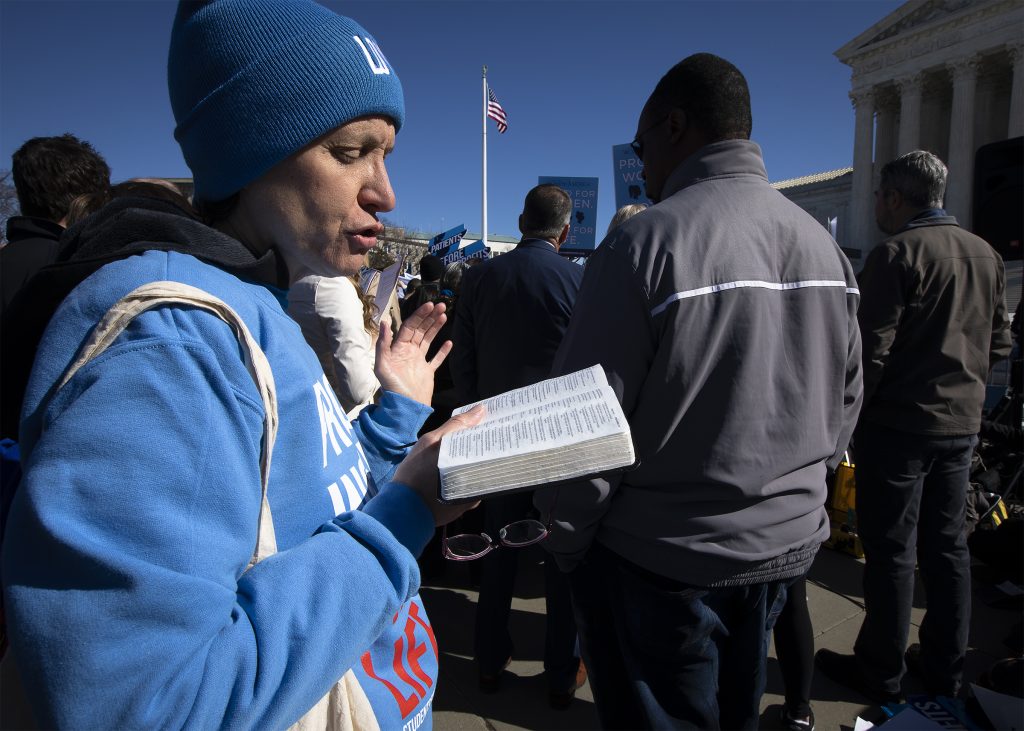For all practical purposes or at least most, the Supreme Court likely has already decided the most important abortion-related case to come before it in nearly half a century. But the decision is known only to a tiny handful of tight-lipped people, while the rest of us won’t find out for over three months.
Allowing for a small but, in the circumstances, unavoidable element of guesswork, the foregoing is an accurate statement of how things stand with June Medical Services v. Russo — the name of the case that virtually all Supreme Court observers agree could set the court and the nation on a brand new course concerning abortion.
June Medical Services was argued before the Supreme Court on Wednesday, March 4. Two days later, following custom, the nine justices met privately in conference and told one another where each stands on the case. Chief Justice John Roberts thereupon assigned the writing of the majority opinion to one of his colleagues — unless of course he either reserved that task for himself or else found himself in the dissenting minority, in which case the senior justice in the majority got to choose the writer.
Next come quiet weeks of writing, sharing of drafts, rewriting, privately conferring, and plain old politicking during which a majority opinion and an unknown number of concurring and dissenting opinions will take shape. As often happens when feelings run especially high, the court most likely will announce the result at or near the end of term, which is to say, late in June. Then it will adjourn until October, leaving its handiwork to be hailed by some and deplored by others.
The case, as everyone knows by now, concerns a Louisiana law requiring that a doctor who performs an abortion in the state have admitting privileges at a hospital within 30 miles of the site. June Medical Services, which operates an abortion clinic, contends that, contrary to a 1992 Supreme Court ruling, this places an “undue burden” on women seeking abortions.
But the implications of this case stretch back beyond 1992 to the court’s 1973 decision in Roe v. Wade, which legalized abortion everywhere in the country. Supporters of abortion fear — and opponents hope — that the court, now with a conservative majority, will overturn Roe or at least allow for significant state-imposed restrictions on the performance of abortion.
The oral argument shed no decisive light on what the court will do. Questions raised by the justices ranged from whether the abortion clinic has legal standing to bring suit against the law, to whether a statute unconstitutional in one state can be constitutional in another due to differences in factual circumstances from state to state.
Hundreds of demonstrators milled outside the Supreme Court building as the argument took place. Addressing pro-choicers, Senate Minority Leader Chuck Schumer (D-NY) incredibly hurled a vitriolic though unspecific threat at President Trump’s two court appointees, Justices Neil Gorsuch and Brett Kavanaugh: “You have released the whirlwind, and you will pay the price. You will not know what hit you if you go forward with these awful decisions.”
Later that day, the Chief Justice replied in an unusual public statement: “Justices know that criticism comes with the territory, but threatening statements of this sort from the highest levels of government are not only inappropriate, they are dangerous. All members of the court will continue to do their jobs, without fear or favor, from whatever quarter.”
To which I would only add: Pray for the justices. All of them.

